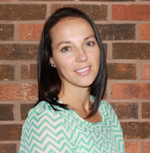The logistics of alternative practice settings: Finding a collaborative dentist
If you are a dental hygienist considering an alternative practice setting, you'll likely need to find a dentist to work with. Here is one hygienist's experience in making that choice, as well as several things you should keep in mind.
If you’ve been following my journey, you’ll know that I have discussed the logistics of working through this process, and at this point this idea is still only carried out on paper and in my head. I have a local long-term care facility that is interested and excited to be able to provide these much-needed services to their residents. I am ready to be able to start providing services and hope to make a difference in the residents’ quality of life. The next step—and it is an important step—is to find a dentist that shares my vision and is willing to join me on this journey.
My community is small, with a population not much over 10,000. However, there are several other small communities nearby. There are five dental offices in my immediate community, with nine dentists providing care. There is also one retired dentist that is providing screening services at a local church one night a week. There appear to be several opportunities here. When interviewing for my current office, I discussed this with my employer; he told me that at this time in his career, and considering his family life, he does not wish to take on any additional patient base. There is another dentist that works there as well, but he has the same concerns. My previous office has 4 dentists, but I’ll be honest, I am not bringing this opportunity to them for several reasons. That leaves me with one retired and three practicing dentists within my community to discuss this opportunity with.
Through some previous discussions with my current dentist, as well as bouncing ideas off of my hygienist friends, I know that there are some substantial concerns, one being that these residents will become patients of record and with that comes a level of responsibility. This patient base will present with potentially complicated treatment needs and other health and financial considerations. These are concerns that I am unable to alleviate on my own, but I have some ideas.
Another question that came up was handling billing. Would this be completed through the dental office? Was it something that I could complete? Do we need to have it processed through the facility? The question of location and available space is also of concern. Will there be water access and room for a dental chair? What kind of equipment would be needed? I wanted to be able to compile all of my paperwork and information together and have solutions to the many questions that I anticipate from the dentists.
My first thought was to discuss this with the retired dentist. He is keeping his license current and providing screenings for a charitable organization within a church one night per week. My draw to him was that while he is still licensed, he does not treat patients within a clinic setting. This would avoid the patient of record concern. We would provide referrals for needed treatment and the resident’s family would then take the responsibility from there. He immediately recognized the need and listened to my ideas. He was a bit concerned about the way the state board interprets the requirements for being a dentist of record since he does not have a facility to complete any recommended treatment for these patients. After speaking with him, I discovered that his concerns were correct. The state board did not feel that a retired dentist would be a good choice for this collaboration for the already discussed reasons. Although this did not lead to a working agreement, I was still encouraged. On to the next dentist!
I chose the next dentist, John, based on the recommendations of a few friends that know him and how giving he is for these type of situations. I caught him before his day of patient care started and presented my idea, left him with all my paperwork and contact information, and hoped for the best. He listened, had questions, and most importantly did not tell me “no” the minute I walked through the door. I asked him to take his time reviewing the information and contact me with any questions before he gave a final answer. I also passed along the information of a collaborative dentist working with another hygienist so that John could discuss any questions or concerns with him as well. We touched base with the administrator at the facility and was able to tour the room that they would have available. John gave me the go-ahead to complete the application and agreement paperwork. I was excited! Without John on board, I can’t proceed with this journey. Together we will give the opportunity one year, which is how long the agreement paperwork will last before we need to renew, and evaluate how things are going before we decide to continue.
I started this with the awareness that this process may take some time. My goal was to be able to enter a long-term care facility within two years. I knew that the paperwork itself, the decision from the board, and obtaining needed equipment and supplies all would take time. To my surprise, much of this is happening quicker than I had anticipated, and I am so encouraged to continue down this path. I am confident that this will be filling a void in care for these residents and that the families and facility will recognize the importance of this accessibility. For now, I wait. The board will meet next month to review my application and give me authorization to proceed. Wish me luck, or better yet, join me—either in simply following my story or by becoming involved in your own state’s associations to progress our professional reach.
Previous columns by Amy Ericks
The logistics of alternative practice settings: Nursing homes
‘I hope to end up in a nursing home’: Dental hygiene career alternatives
Pursuing collaborative practice 'out of the goodness of your heart'
Editor's note: This article first appeared in RDH eVillage. Click here to subscribe.








